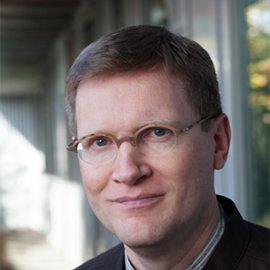Littérature, Université de Genève et Université de Fribourg, Suisse

Octobre 2017 à Juin 2018
Philippe Geinoz is a Lecturer in 19th and 20th-century French literature at the University of Geneva and the University of Fribourg (Switzerland). Having initially studied architecture, he went on to obtain a Master’s degree in French literature and art history and a doctorate in Geneva. His thesis was the basis for a 2014 publication entitled Relations au travail : dialogue entre poésie et peinture à l’époque du cubisme. Beyond its contribution to research into the relationship between text and image, this multiple award-winning book initiated broader historical reflections, in terms of function, on experimentation with form and one of the major concerns of modernity: the place of the individual and the very possibility of individuality in an egalitarian society. It is this process of reflection that Philippe Geinoz builds on in his articles on the work of Goncourt, Huysmans, Laforgue, Romains, Apollinaire, Reverdy and Leiris, in his forthcoming book on the writings of Swiss novelist Catherine Colomb, and in his “Inquiétudes américaines” project, which included research trips to Paris (Paris IV-Sorbonne) and New York (CUNY), with funding from the SNSF (Swiss National Science Foundation).
Americanisation and decadence. American presence and poetic explorations in French literature in the 1870s and 1880s
This proposal began with the observation that over a period lasting barely 20 years (1870 until the late 1880s) the United States had a persistent presence in French texts which, although diverse, had one thing in common: their references to America combined with poetic explorations. The period of study is therefore the beginning of France’s Third Republic, and the research subject is this (implicit) connection between a literary inquiry and an evaluation – albeit allusive – of a societal model which could be studied from a distance and in advance through the lens of the United States. The proposed study will begin by charting this American presence (representations of the United States as well as the actual presence of American writers) in French novels and poems from this period. It will then show how this presence reveals concerns for the future of French society, before concluding with an analysis of the detail in the texts and the way in which these concerns are expressed, not only in terms of explicit content but also, and above all, in terms of the aesthetic novelty that the texts offered to the reader as a resource.
GEINOZ Philippe, Relations au travail. Dialogue entre poésie et peinture à l’époque du cubisme (Apollinaire-Picasso-Braque-Gris-Reverdy), Genève : Droz, 2014, 560 p.
GEINOZ Philippe, « L’américanisation de la ville et l’intimité perdue : Huysmans et le nouveau Paris », Romantisme, 172, 2016, p. 118-127.
GEINOZ Philippe, « "La peinture est l’art le plus pieux" », Europe, 1043 (« Guillaume Apollinaire »), 2016, p. 194-203.
GEINOZ Philippe, « Le travail du dimanche. Recherche d’une contemporanéité dans les Derniers vers de Laforgue », Littérature, 174, 2014, p. 54-71.
GEINOZ Philippe, « Le théâtre des fièvres dans Fibrilles de Leiris », Versants, 59:1 (La fièvre à l’œuvre, du corps à la métaphore), 2012, p. 111-129.